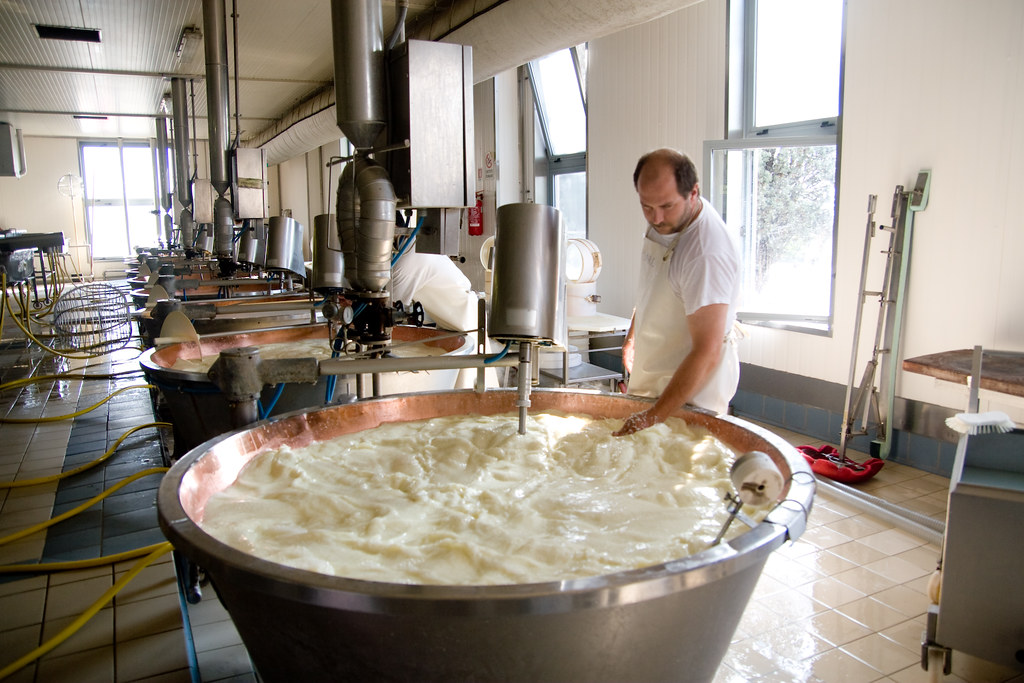A Taste of Credibility: Floridia Cheese Melbourne and Its Workmanship
A Taste of Credibility: Floridia Cheese Melbourne and Its Workmanship
Blog Article
Opening the Keys of Artisanal Cheese Making: A Detailed Do It Yourself Guide
In the world of cooking workmanship, artisanal cheese making stands as a testament to the fragile equilibrium between practice and advancement. Each action in the process, from selecting the best milk to developing aging strategies, holds within it a wealth of knowledge gave through generations. As we embark on this trip to demystify the art of developing charming cheeses, we are confronted with a tapestry of skills and tricks waiting to be unwinded. Join us as we discover the details of this ancient craft, where art, scientific research, and perseverance converge to produce flavors that entice the senses.
Selecting the Right Milk
When getting started on the trip of artisanal cheese production, the option of milk plays a vital function in figuring out the quality and qualities of the final item. The kind of milk chosen influences the taste, structure, and on the whole profile of the cheese.
When choosing milk for cheese production, it is very important to consider the fat material. Higher fat web content in milk can lead to a creamier and richer cheese, while lower fat material might cause a drier and firmer texture. Additionally, the source of the milk, whether from cows, goats, lamb, or buffalo, adds distinctive tastes and attributes to celebrity (Floridia Cheese Thomastown). Each kind of milk brings its very own subtleties, permitting a wide variety of cheese ranges to be crafted based upon the selected milk. Eventually, the selection of milk is a fundamental choice that establishes the foundation for a successful artisanal cheese-making endeavor.
Culturing and Coagulating
To launch the cheese-making process, the vital actions of culturing and coagulating need to be carefully performed to transform milk into curds and whey. The type of culture used can significantly impact the taste, structure, and ripening of the last cheese item.

The timing and temperature level control throughout culturing and coagulation are crucial aspects that affect the final end result of the cheese. Proper execution of these actions is important to make sure the preferred texture, flavor, and consistency of the artisanal cheese being created.
Draining and Pressing Curds
After the milk healthy proteins have actually coagulated and the curds have been reduced to launch whey, the following vital step in artisanal cheese making involves draining pipes and pushing the curds to accomplish the preferred texture and consistency of the last cheese product. Draining is the procedure of separating the curds from the whey. This can be done by moving the curds into a cheesecloth-lined colander or mold and enabling the whey to drain off naturally. The time for draining pipes can vary depending on the kind of cheese being made and the preferred wetness web content.
Pressing aids get rid of any kind of continuing to be whey and compacts the curds to form a solid cheese wheel. Correct draining pipes and pressing are important steps that substantially affect the quality and characteristics of the artisanal cheese being produced.
Aging and Flavoring Strategies
Applying meticulous aging and flavor techniques is crucial in improving the depth and complexity of artisanal cheeses, boosting their taste profiles to splendid levels of refinement and sophistication. Aging plays an essential function in developing the special flavors and appearances that distinguish artisanal cheeses. Throughout the aging process, cheeses are stored in meticulously regulated environments where variables such as air movement, temperature, and moisture are controlled to encourage the growth of valuable molds and bacteria. This regulated environment enables the cheese to grow gradually, developing abundant tastes and intricate scents.
Seasoning strategies additionally add significantly to the last preference of artisanal cheeses. Cheesemakers may pick to introduce added flavors by including components such as herbs, seasonings, or also fruits right into the click reference cheese during the production process. In addition, some cheeses are cleaned or massaged with various liquids, such as salt water or alcohol, to boost their textures and tastes.
Wrapping and Saving Cheeses

Final Thought
Finally, mastering the art of artisanal cheese making involves carefully picking the best milk, adhering to specific culturing and coagulating processes, draining and pressing curds effectively, and making use of different aging and flavor techniques. By complying with these steps diligently and with interest to detail, you can develop your own delicious and one-of-a-kind cheeses at home. Remember to cover and keep your cheeses appropriately to guarantee optimal flavor and texture growth. Happy cheese making!
Each kind of milk brings its own subtleties, permitting for a wide range of cheese selections to be crafted based on the selected milk.After the milk healthy proteins have actually coagulated and the curds have been cut to launch whey, the following important action in artisanal cheese making involves draining and pushing the curds to accomplish the desired texture and consistency of the last cheese product. Most cheeses need to be wrapped in wax paper or cheese paper to enable them to take a breath while protecting them from drying out. useful link For cheeses that require to continue aging, such as bloomy rinds or washed rinds, ensure click they are saved in a great atmosphere like a cheese cavern or a refrigerator set to the proper temperature level. By paying focus to the wrapping and storage of artisanal cheeses, cheese makers and fanatics can preserve the stability of these specials and fully enjoy their intricate tastes.
Report this page